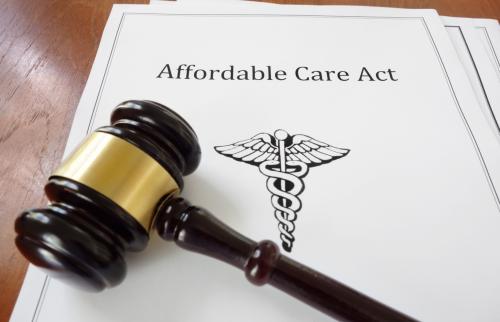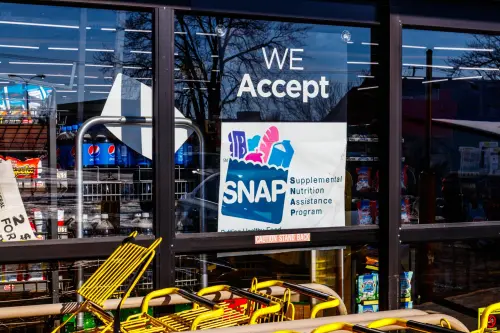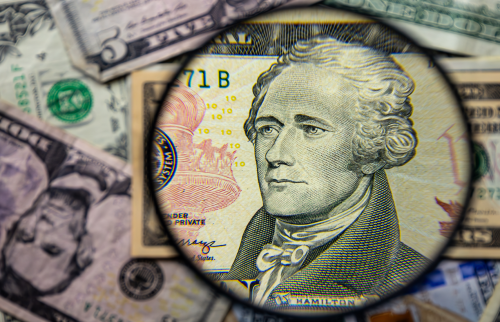Tucked into the House Republicans’ One, Big, Beautiful Bill Act (OBBBA) is a $40 billion expansion of tax-preferred Health Savings Accounts (HSAs). HSAs offer a large tax subsidy for saving toward out-of-pocket medical costs and a secondary benefit for long-term savings used in retirement. Expanding them would primarily benefit high-income households, making a package of $3.9 trillion in tax cuts that tilt heavily towards the wealthiest Americans even more regressive.
HSAs aim to help insured Americans afford high out-of-pocket health care costs
Established in 2003, HSAs are savings accounts that can be used to pay for medical services. To be eligible, individuals must be enrolled in a high-deductible health plan (HDHP) that has with a deductible of at least $1,600 for individuals ($3,200 for families) and meets certain other requirements.
HSAs and other tax-preferred health spending arrangements emerged in response to a real problem: Even with insurance, many Americans find medical costs burdensome. In employer-sponsored insurance plans—the most common form of coverage—the average annual deductible for single coverage is $1,735, with additional cost-sharing even after meeting the deductible.
Nearly one-in-three covered workers now faces a deductible of $2,000 or more, and some people report that these costs keep them from getting the care they need. The 2023 National Health Interview Survey shows that more than 8% of prime-aged adults with health insurance skipped needed medical care due to cost, and nearly 5% said they couldn’t afford prescription drugs or mental health services.
HSAs can ease these financial pressures. They allow eligible account holders to set aside pre-tax dollars for health expenses and contribute up to $4,300 ($8,550 for accounts tied to family coverage). Employers can also contribute, funds can be invested and grow tax-free, and withdrawals to cover medical expenses are exempt from tax. Withdrawals for other expenses are generally subject to tax and, if the individual is under age 65, a 20% penalty.
In recent years, at least 12 million individuals contributed, either on their own or through their employer, to an HSA.
But HSAs disproportionately benefit higher-income households
HSA benefits are often out of reach for those with the greatest financial need, raising questions about the fairness, efficacy, and efficiency of expansion. Higher-income households are more likely to be offered and enroll in HSA-eligible plans, contribute to HSAs, and contribute larger amounts. Because they face higher marginal tax rates, higher-income households also receive the largest tax benefit for each dollar contributed to an account. And, importantly, these households are the least likely to face financial hardship due to out-of-pocket medical costs.
Instead, higher-income households are more likely to pay for medical expenses out-of-pocket while letting their HSA balances grow tax-free—essentially turning the HSA into a tax-advantaged investment or retirement vehicle. This can provide larger tax benefits in the long run than using HSA funds for medical care. In contrast, lower-income households are more likely to use HSA funds as they are deposited, missing the long-term tax advantage by treating the HSA more like a Flexible Savings Account.
The distribution of HSA usage confirms that higher-income households overwhelmingly benefit from HSAs. The U.S. Treasury estimated that, in 2014, roughly 60% of the HSA tax benefit accrued to households that earn more than $100,000 per year. In 2021, roughly 10% of tax returns with an adjusted gross income (AGI) below $75,000 reported HSA contributions, whereas one in five tax returns with AGI between $500,000 and $999,999 reported HSA contributions. The taxpayer cost of these benefits was $12.2 billion in 2024.
Finally, these accounts have become a formidable investment vehicle for some. By the end of 2024, HSAs had amassed $147 billion in total assets across 39 million accounts. Funded accounts opened twenty years earlier had an average account balance of only $29,869, reflecting the cumulative effect of long-term HSA ownership and tax-free growth.
HSA expansion would likely expand benefits for higher-income households
The House bill’s expansion of HSAs will likely disproportionately benefit high-income households, doubling down on current HSA policies. The OBBBA’s provisions:
- Allow individuals enrolled only in Medicare Part A (Hospital Insurance) to continue to contribute to their HSA
- Designate all bronze and catastrophic plans offered through Affordable Care Act marketplace exchanges as HDHPs, regardless of deductibles and annual limits on out-of-pocket maximum that may otherwise disqualify these plans, allowing enrollees to contribute to an HSA
- Expand allowable HSA expenses to include Direct Primary Care (DPC) memberships
- Expand allowable HSA expenses to include fitness expenses, including gym memberships
- Relax certain contribution rules for HSAs used by married couples
- Exempt the implied value of employer-sponsored, on-site health clinics from HDHP required deductible rules
- Double the allowable contributions for taxpayers earning less than $75,000 ($150,000 for joint filers)
While these changes expand eligibility for HSA participation and broaden the range of expenses that can be covered, lower- and middle-income households are the least likely to be maximizing the benefits of HSAs. Modest expansions would do little to address the underlying barriers they face in accessing affordable health care. For example, Bronze and Catastrophic plans offer only the most basic protection in exchange for the lowest monthly premiums. Enrollees who choose them are less likely to have enough disposable income to fund a newly available HSA in the first place, let alone take advantage of the long-term tax benefits.
Likewise, doubling the contribution cap for those earning under $75,000/$150,000 could, in principle, benefit lower-income households. But in 2021, roughly 10% of taxpayers in that group contributed to an HSA at all. Additionally, one in five HSAs was unfunded in 2024, and the average contribution to the remaining 80% of accounts was just over $1,800, less than half the contribution limit in that year. In other words, few of these households are meaningfully constrained by the current HSA contribution cap.
The proposed HSA expansion would do little to help low- and middle-income households afford medical care or address the deeper flaws in the health plans tied to HSAs. Instead, the House bill’s proposed changes risk spending $40 billion in taxpayer dollars to primarily benefit those who need it the least. These funds would be better spent supporting programs that directly assist low- and middle-income families and meaningfully expand access to health care.
The Brookings Institution is committed to quality, independence, and impact.
We are supported by a diverse array of funders. In line with our values and policies, each Brookings publication represents the sole views of its author(s).






Commentary
The hidden costs of expanding HSAs in One Big, Beautiful Bill
June 5, 2025